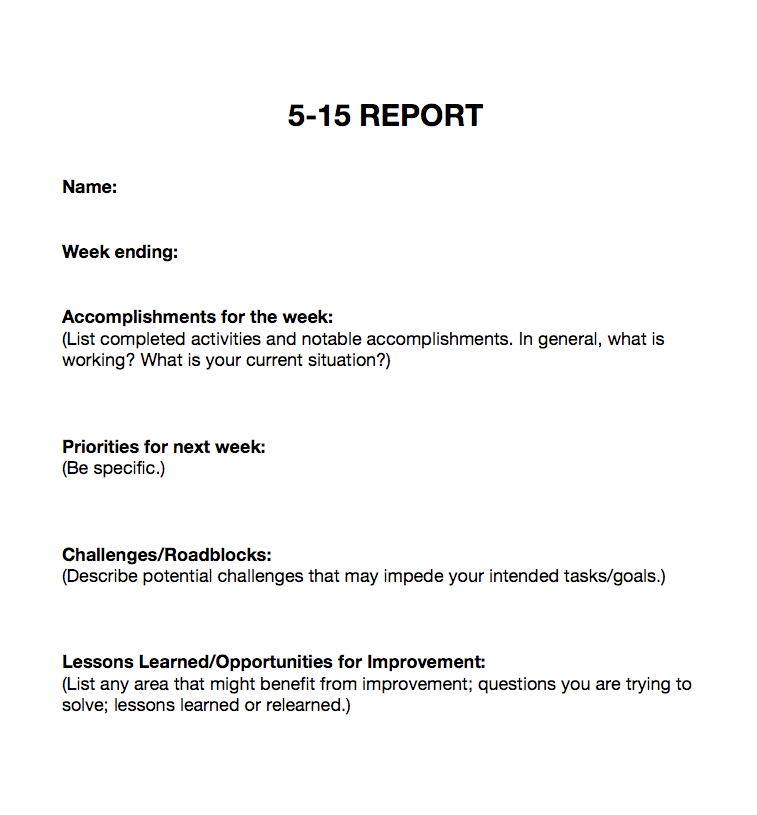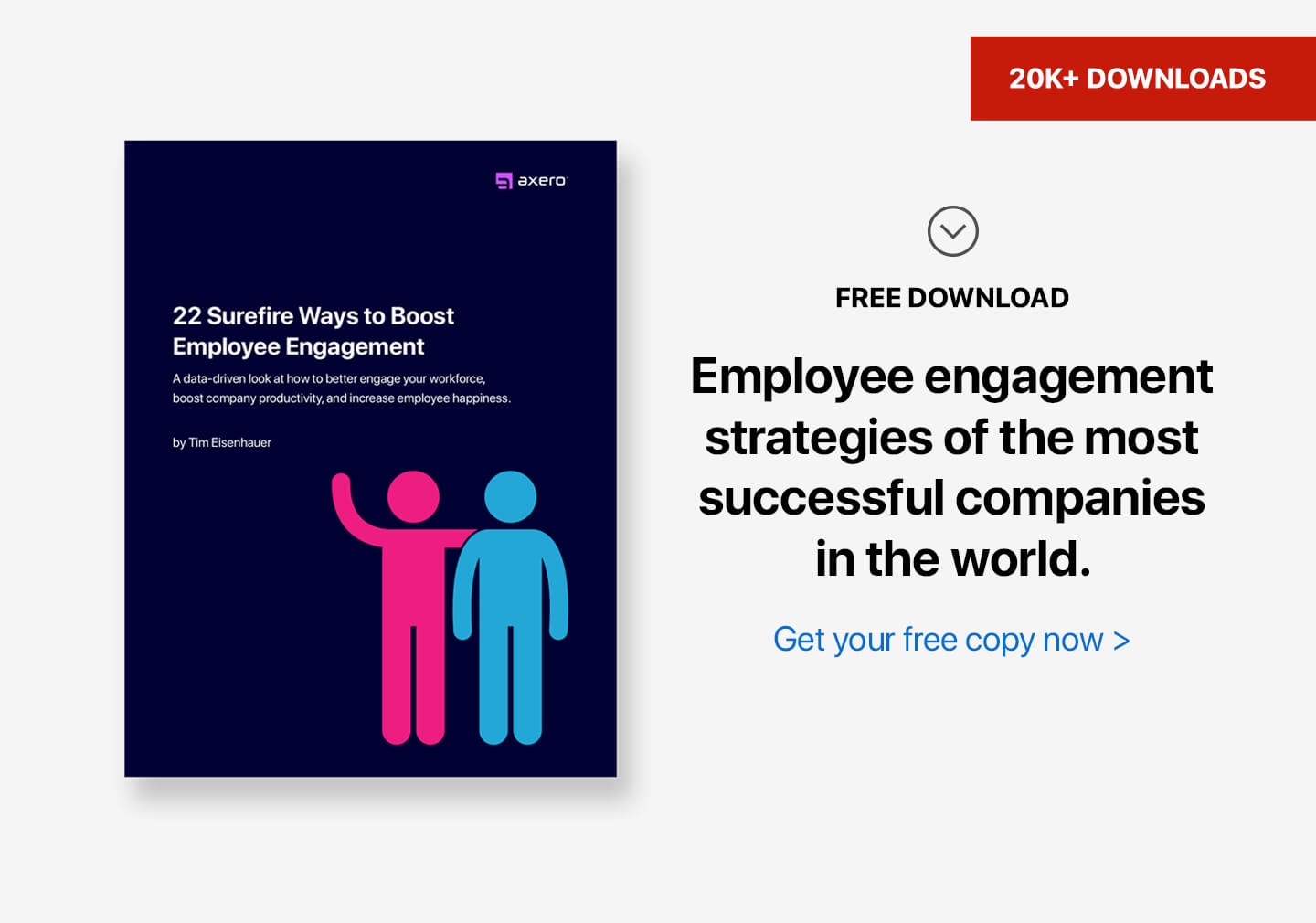“Pettiness” and “I’m the only one doing anything” (not true, but…)
— Manager, POCC
Thank God we are still a free country where everyone is entitled to the relentless pursuit of his own pettiness. And if I am not ready to kick mine, how can I demand it of others? We must recognize our own judgmental and petty thoughts to address this issue effectively.
When individuals realize the necessity of living in the present and releasing past grudges, they can achieve a more fulfilling and joyful life.
I love this challenge because I’ve solved it in my company. And I did it by accident. Before we begin …
- What is a 5-15 report?
- The Origin of the 5-15 Report.
- How is a 5-15 Report Structured?
- How We Used the 5-15 Report in Axero
- The Lasting Results of the 5-15 Report
Introduction to Pettiness
Pettiness is more common than we might like to admit, and it can wreak havoc on both personal and professional relationships. When someone exhibits petty behavior, it often leads to feelings of resentment and anger, creating a toxic environment that can be hard to navigate. Recognizing the signs of a petty person—like nitpicking or making mountains out of molehills—is crucial in preventing unnecessary conflicts.
Petty individuals often struggle with insecurity and low self-esteem. They act petty as a defense mechanism to protect their fragile self-image. Understanding the motivations behind pettiness, such as the desire for control and power or the need for attention and validation, can help us develop strategies to manage and overcome this behavior. By addressing the root causes, we can foster healthier interactions and reduce the impact of pettiness in our lives.
The Effects of Pettiness
Petty behavior can have severe consequences on healthy relationships, leading to emotional fatigue, strained friendships, and damaged family bonds. In the workplace, a petty attitude can create a toxic environment, hindering concentration and collaboration among coworkers, and ultimately affecting productivity and job satisfaction.
Dealing with petty people can be challenging, but it’s essential to maintain a sense of empathy and understanding. Instead of letting their behavior dictate our actions and reactions, we should focus on the bigger picture. Recognizing that petty behavior often stems from deeper psychological issues can help us develop a more compassionate and supportive attitude towards such individuals.
Seeking professional help, such as consulting with a counselor or therapist, can provide valuable advice and strategies for managing petty behavior. This can improve overall well-being and help us navigate the complexities of dealing with pettiness in our personal and professional lives.
Understanding Petty Behavior
Petty behavior often involves unnecessary criticism, nitpicking, or making a big deal out of small things. This can be damaging to relationships and create a toxic environment. Insecure people may exhibit petty behavior as a way to assert their control and power, or to get attention and validation from others.
Recognizing the signs of petty behavior, such as gossip or a tendency to focus on negative aspects, can help in identifying and addressing the issue. Developing a sense of empathy and understanding towards petty individuals can help create a more supportive and non-judgmental environment, which can ultimately lead to positive change.
Focusing on personal growth and development, rather than getting caught up in petty behavior, can help cultivate a more positive and resilient attitude. This leads to greater happiness and life satisfaction, allowing us to rise above the pettiness and focus on what truly matters.
What is a 5-15 report?
A 5-15 report is a communication tool used to facilitate regular updates between employees and their managers. The name “5-15” refers to the suggested time it takes to complete the report: 5 minutes for employees to fill it out and 15 minutes for managers to review and respond. The main purpose of a 5-15 report is to provide a structured way for employees to share their progress, accomplishments, challenges, and any other relevant information with their managers. This tool enhances the ability of both employees and managers to make informed decisions and maintain self-awareness in their interpersonal interactions. Following a structured approach, much like a personal development course, can help individuals effectively let go of petty feelings and focus on meaningful communication.
The Origin of the 5-15 Report.
I stumbled upon a 1988 article about Patagonia while working on Who the Hell Wants to Work for you? Patagonia is a designer of outdoor clothing and gear for the silent sports: climbing, surfing, skiing and snowboarding, fly-fishing, and trail running. The article explained how Yvon Chouinard, CEO of Patagonia, ran the company while spending most of his time outdoors.
Once a week, every Patagonia employee filled out a form summarizing the past week’s accomplishments, challenges, and lessons, and setting priorities for the next week. (I have a version of this form and a solid case to make it your performance plan in my book in Chapter 19, Give Them a Voice)
Chouinard realized the necessity of understanding underlying issues in communication and relationships within the company. He designed the weekly report to take about fifteen minutes to write and five minutes to read. Managers collected individual 5-15s and compiled team reports for their managers, and so on, until a filtered and synthesized version of the report reached the CEO, wherever he was.
How is a 5-15 Report Structured?
As seen in the image above, a typical 5-15 might look like:
- Accomplishments: The employee lists the tasks, projects, or goals they have accomplished since the last report. This highlights their contributions and provides visibility into their productivity.
- Challenges: The employee outlines any obstacles, difficulties, or challenges they are facing. This allows the manager to understand potential roadblocks and offer assistance if needed.
- Future priorities: The employee sets new goals or priorities for the upcoming week or reporting period. This helps align their work with the overall objectives of the team or organization.
- Feedback and Suggestions: Employees can use this section to share feedback on processes, suggest improvements, or provide insights from their perspective.
Managers, in turn, review the reports to stay informed about their team members’ progress, challenges, and goals. They can provide feedback, offer guidance, allocate resources, and make decisions based on the information provided in the report. This regular communication helps strengthen the supervisor-employee relationship, ensures alignment with organizational goals, and supports employee growth and development. Having a talk about these reports can resolve petty grievances and improve overall communication.
Clear and positive words in these reports can significantly impact relationships and reduce conflicts.
How We Used the 5-15 Report in Axero
Axero was going through many growing pains. I was working around the clock hiring and training new people and taking care of business. I often felt like I was the only one in the company getting anything done. Sure, I knew that wasn’t true—but I thought it anyway.
I wondered if there was a way for me to stay in the loop without doing so much work, and Chouinard’s idea caught my eye. It was insultingly simple. I couldn’t believe it had been around since 1988, and I was only now learning about it. So, I asked everyone to do the 5-15s. I didn’t know if it would solve anything. But at twenty minutes a week, it cost nothing to try.
Right away, I noticed that people liked writing and reading these reports. It was a great way to wrap up a long week. Even talking about the things that didn’t go well felt good. You felt like you were accomplishing something just by stating the problem and focusing on the next steps. Which often proved to be the case.
Personally, I found that reflecting on my own feelings and reactions to the week’s events helped me understand my own emotional responses better. I began to notice how recognizing personal emotions and situations was crucial for fostering a positive work environment.
The Lasting Results of the 5-15 Report
Soon, the mood in the company shifted. The reports gave us a break from chasing our tails, a moment to put our daily tasks in perspective. We saw the bigger, less petty picture. And we saw each other.
As I looked back on my week, I knew every Axero employee was doing the same thing: figuring out his wins, losses, lessons learned, and the next week’s priorities. We were all curious to see what we came up with, so, we put our 5-15s on the intranet where everyone could read everyone else’s. The reports didn’t just go up the chain; we shared them with everybody in the company
It didn’t seem like a big deal, but after a year, I am amazed at the difference the 5-15s have made for us.
- Everyone knows what everyone else is working on, and that’s a good thing. People appreciate each other and don’t act like they are the only ones doing anything worthwhile.
- Everyone knows what’s important to everyone else. Sales and customer service people share their reports, so we all know what’s valuable to prospects and customers and prioritize.
- We can set what we call “realistic and moving goals,” since we understand our capacity and priorities much better.
- We set realistic goals and are transparent, everyone owns his job. People not only deliver superior results, but they are constantly improving the process so that a new person can step in their shoes and replace them when they move onto bigger things. This is exactly what we need to keep growing!
I agree with this POCC manager: pettiness is a big problem if you care about running your company and growing your business. Fortunately, it goes away when we share our work and sharpen our focus. Give it a shot! By letting go of pettiness and fostering hope, we can cultivate a healthier mindset. This shift allows us to experience more good things in our professional and personal lives.
If you dislike pettiness, you might like my book, because it will help you inspire people to get past the small stuff.













 info@axerosolutions.com
info@axerosolutions.com 1-855-AXERO-55
1-855-AXERO-55


